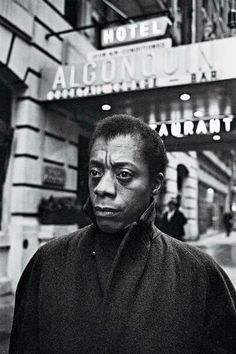In “Down at the Cross” and in the film I Am Not Your Negro, there is a complex discussion and presentation of what it is like being Black in a predominantly white society. In “Down at the Cross” especially, there is a clearer image of Baldwin’s views and critiques of white supremacy concerning “the Negro Problem.” When Baldwin began to explore the Black and Negro experience and the issues of race and identity in the United States he noticed that Black people were openly weeping about the oppression they faced yet they were “unable to say what it was that oppressed them except that they knew it was ‘the man’ – the white man” (Baldwin p. 298). Baldwin called this a “terrifying single-mindedness” (Baldwin p. 297). I believe using the phrase “terrifying single-mindedness” underscores the depth of Black people’s feelings about their inferiority and what it is like to live in a world that debases them. It suggests that the determination and intense focus of the Black community to combat their white oppressors is frightening and extreme and to Baldwin, very unsettling.
In this critique of the way Black people navigate white positions and power in America, I found that Baldwin was denouncing the Black experience by suggesting that their intense focus on achieving their goal and liberation was terrifying. The white culture and white superiority that dominates society has and continues to limit opportunities for many Black Americans. Whites reinforce and perpetuate the stereotypes and disadvantages of Black Americans by not only basing their identity on black inferiority but by maintaining their power and superior societal position so that Blacks cannot reach their status and so that they can maintain theirs. There are so many other things related to issues of race in the United States that support this argument. For example, as was shown in the film I Am Not Your Negro, the killings and beatings of Black men, police brutality, intentional discrimination and segregation, and more which all persist today. I feel as though this is more terrifying than the “single-mindedness” of Black people seeking equality and liberation.
I cannot agree with Baldwin’s view of Black individuals operating on the knowledge that it was the white man who was oppressing them as a “terrifying single-mindedness” (Baldwin p. 297). White people have treated Blacks horribly, and Baldwin has demonstrated this therefore in my eyes, I think Black people are justified in separating themselves from the whites that have separated themselves from them for so long and have the right to be so extreme in their goal to seek liberation and equality from the white oppressors. While the importance of being partial is definitely a great thing for society, which Baldwin appears to be stressing in “Down at the Cross”, promoting the idea to the Black community that what they feel about the white man, their desire to separate, and their unwavering dedication to freeing themselves from their oppressors are single-minded and terrifying, in my opinion, diminishes their experiences and their objective.
